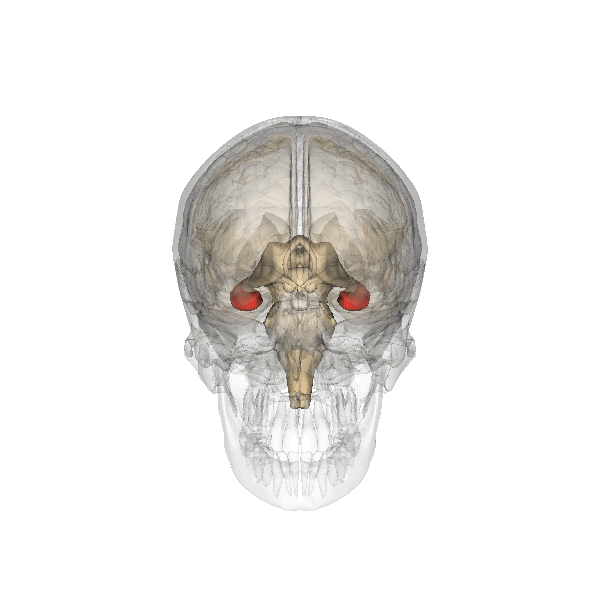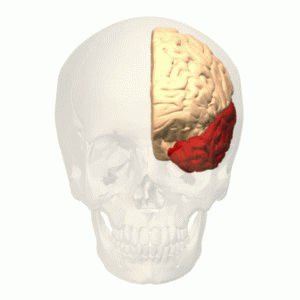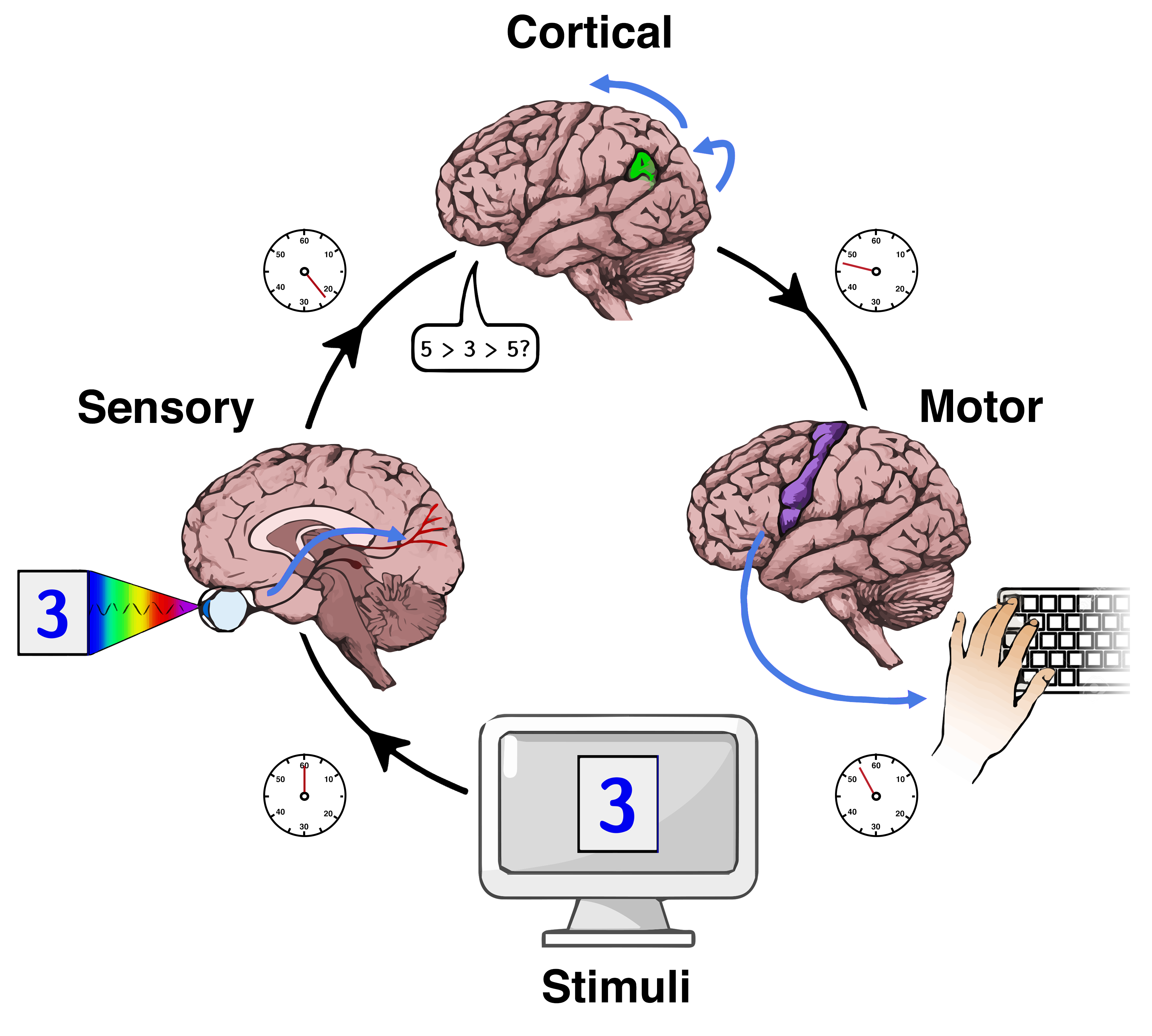|
Recognition Memory
Recognition memory, a subcategory of explicit memory, is the ability to recognize previously encountered events, objects, or people.Medina, J. J. (2008)The biology of recognition memory. ''Psychiatric Times''. When the previously experienced event is reexperienced, this environmental content is matched to stored memory representations, eliciting matching signals. As first established by psychology experiments in the 1970s, recognition memory for pictures is quite remarkable: humans can remember thousands of images at high accuracy after seeing each only once and only for a few seconds.Standing, L. (1973). "Learning 10,000 pictures". ''The Quarterly Journal of Experimental Psychology'', 25(2), 207–222. Retrieved Jan 20 2020, from . Recognition memory can be subdivided into two component processes: recollection and familiarity, sometimes referred to as "remembering" and "knowing", respectively. Recollection is the retrieval of details associated with the previously experienced event ... [...More Info...] [...Related Items...] OR: [Wikipedia] [Google] [Baidu] |
Explicit Memory
Explicit memory (or declarative memory) is one of the two main types of long-term human memory, the other of which is implicit memory. Explicit memory is the conscious, intentional recollection of factual information, previous experiences, and concepts. This type of memory is dependent upon three processes: acquisition, consolidation, and retrieval. Explicit memory can be divided into two categories: episodic memory, which stores specific personal experiences, and semantic memory, which stores factual information.Tulving E. 1972. Episodic and semantic memory. In Organization of Memory, ed. E Tulving, W Donaldson, pp. 381–403. New York: Academic Explicit memory requires gradual learning, with multiple presentations of a stimulus and response. The type of knowledge that is stored in explicit memory is called declarative knowledge. Its counterpart, known as implicit memory, refers to memories acquired and used unconsciously, such as skills (e.g. knowing how to get dressed ... [...More Info...] [...Related Items...] OR: [Wikipedia] [Google] [Baidu] |
Temporal Lobe
The temporal lobe is one of the four major lobes of the cerebral cortex in the brain of mammals. The temporal lobe is located beneath the lateral fissure on both cerebral hemispheres of the mammalian brain. The temporal lobe is involved in processing sensory input into derived meanings for the appropriate retention of visual memory, language comprehension, and emotion association. ''Temporal'' refers to the head's temples. Structure The temporal lobe consists of structures that are vital for declarative or long-term memory. Declarative (denotative) or explicit memory is conscious memory divided into semantic memory (facts) and episodic memory (events). The medial temporal lobe structures are critical for long-term memory, and include the hippocampal formation, perirhinal cortex, parahippocampal, and entorhinal neocortical regions. The hippocampus is critical for memory formation, and the surrounding medial temporal cortex is currently theorized to be critical f ... [...More Info...] [...Related Items...] OR: [Wikipedia] [Google] [Baidu] |
Detection Theory
Detection theory or signal detection theory is a means to measure the ability to differentiate between information-bearing patterns (called stimulus in living organisms, signal in machines) and random patterns that distract from the information (called noise, consisting of background stimuli and random activity of the detection machine and of the nervous system of the operator). In the field of electronics, signal recovery is the separation of such patterns from a disguising background. According to the theory, there are a number of determiners of how a detecting system will detect a signal, and where its threshold levels will be. The theory can explain how changing the threshold will affect the ability to discern, often exposing how adapted the system is to the task, purpose or goal at which it is aimed. When the detecting system is a human being, characteristics such as experience, expectations, physiological state (e.g. fatigue) and other factors can affect the threshold app ... [...More Info...] [...Related Items...] OR: [Wikipedia] [Google] [Baidu] |
Decision Making
In psychology, decision-making (also spelled decision making and decisionmaking) is regarded as the cognitive process resulting in the selection of a belief or a course of action among several possible alternative options. It could be either rational or irrational. The decision-making process is a reasoning process based on assumptions of values, preferences and beliefs of the decision-maker. Every decision-making process produces a final choice, which may or may not prompt action. Research about decision-making is also published under the label problem solving, particularly in European psychological research. Overview Decision-making can be regarded as a problem-solving activity yielding a solution deemed to be optimal, or at least satisfactory. It is therefore a process which can be more or less rational or irrational and can be based on explicit or tacit knowledge and beliefs. Tacit knowledge is often used to fill the gaps in complex decision-making processes. Usua ... [...More Info...] [...Related Items...] OR: [Wikipedia] [Google] [Baidu] |
Long-term Memory
Long-term memory (LTM) is the stage of the Atkinson–Shiffrin memory model in which informative knowledge is held indefinitely. It is defined in contrast to sensory memory, the initial stage, and short-term or working memory, the second stage, which persists for about 18 to 30 seconds. LTM is grouped into two categories known as explicit memory (declarative memory) and implicit memory (non-declarative memory). Explicit memory is broken down into episodic and semantic memory, while implicit memory includes procedural memory and emotional conditioning. Stores The idea of separate memories for short- and long-term storage originated in the 19th century. One model of memory developed in the 1960s assumed that all memories are formed in one store and transfer to another store after a small period of time. This model is referred to as the "modal model", most famously detailed by Shiffrin. The model states that memory is first stored in sensory memory, which has a large capacit ... [...More Info...] [...Related Items...] OR: [Wikipedia] [Google] [Baidu] |
Franciscus Donders
Franciscus (Franz) Cornelius Donders FRS FRSE (27 May 1818 – 24 March 1889) was a Dutch ophthalmologist. During his career, he was a professor of physiology in Utrecht, and was internationally regarded as an authority on eye diseases, directing the Netherlands Hospital for Eye Patients. Along with Graefe and Helmholtz, he was one of the primary founders of scientific ophthalmology. Life He was born in Tilburg, the son of Jan Franz Donders and Agnes Elizabeth Hegh. Education Franciscus Donders was first educated at Duizel School and seminaries in both Tilburg and Boxmeer. By the age of seventeen, he had started studying medicine in the School of Military in Utrecht. It was here that he discovered his passion for experimental study, specifically in the field of chemistry. By the age of twenty-two he entered the junior military in order to become a surgeon For several years, the young Donders studied at the Royal Dutch Hospital for Military Medicine in Utrecht, then earning ... [...More Info...] [...Related Items...] OR: [Wikipedia] [Google] [Baidu] |
Nerve Impulse
An action potential (also known as a nerve impulse or "spike" when in a neuron) is a series of quick changes in voltage across a cell membrane. An action potential occurs when the membrane potential of a specific Cell (biology), cell rapidly rises and falls. This depolarization then causes adjacent locations to similarly depolarize. Action potentials occur in several types of Membrane potential#Cell excitability, excitable cells, which include animal cells like neurons and myocyte, muscle cells, as well as some plant cells. Certain endocrine cells such as pancreatic beta cells, and certain cells of the anterior pituitary gland are also excitable cells. In neurons, action potentials play a central role in cell–cell interaction, cell–cell communication by providing for—or with regard to saltatory conduction, assisting—the propagation of signals along the neuron's axon toward axon terminal, synaptic boutons situated at the ends of an axon; these signals can then connect wit ... [...More Info...] [...Related Items...] OR: [Wikipedia] [Google] [Baidu] |
Velocity
Velocity is a measurement of speed in a certain direction of motion. It is a fundamental concept in kinematics, the branch of classical mechanics that describes the motion of physical objects. Velocity is a vector (geometry), vector Physical quantity, quantity, meaning that both magnitude and direction are needed to define it. The Scalar (physics), scalar absolute value (Magnitude (mathematics), magnitude) of velocity is called , being a coherent derived unit whose quantity is measured in the International System of Units, SI (metric system) as metres per second (m/s or m⋅s−1). For example, "5 metres per second" is a scalar, whereas "5 metres per second east" is a vector. If there is a change in speed, direction or both, then the object is said to be undergoing an ''acceleration''. Definition Average velocity The average velocity of an object over a period of time is its Displacement (geometry), change in position, \Delta s, divided by the duration of the period, \Delt ... [...More Info...] [...Related Items...] OR: [Wikipedia] [Google] [Baidu] |
Hermann Von Helmholtz
Hermann Ludwig Ferdinand von Helmholtz (; ; 31 August 1821 – 8 September 1894; "von" since 1883) was a German physicist and physician who made significant contributions in several scientific fields, particularly hydrodynamic stability. The Helmholtz Association, the largest German association of research institutions, was named in his honour. In the fields of physiology and psychology, Helmholtz is known for his mathematics concerning the eye, theories of vision, ideas on the visual perception of space, colour vision research, the sensation of tone, perceptions of sound, and empiricism in the physiology of perception. In physics, he is known for his theories on the conservation of energy and on the electrical double layer, work in electrodynamics, chemical thermodynamics, and on a mechanical foundation of thermodynamics. Although credit is shared with Julius von Mayer, James Joule, and Daniel Bernoulli—among others—for the energy conservation principles that e ... [...More Info...] [...Related Items...] OR: [Wikipedia] [Google] [Baidu] |
Mental Chronometry
Mental chronometry is the scientific study of processing speed or reaction time on cognitive tasks to infer the content, duration, and temporal sequencing of mental operations. Reaction time (RT; also referred to as "response time") is measured by the elapsed time between stimulus onset and an individual's response on elementary cognitive tasks (ECTs), which are relatively simple perceptual-motor tasks typically administered in a laboratory setting. Mental chronometry is one of the core methodological paradigms of human experimental, cognitive, and differential psychology, but is also commonly analyzed in psychophysiology, cognitive neuroscience, and behavioral neuroscience to help elucidate the biological mechanisms underlying perception, attention, and decision-making in humans and other species. Mental chronometry uses measurements of elapsed time between sensory stimulus onsets and subsequent behavioral responses to study the time course of information processing in th ... [...More Info...] [...Related Items...] OR: [Wikipedia] [Google] [Baidu] |
Stimulus (physiology)
In physiology, a stimulus is a change in a living thing's internal or external environment. This change can be detected by an organism or organ using sensitivity, and leads to a physiological reaction. Sensory receptors can receive stimuli from outside the body, as in touch receptors found in the skin or light receptors in the eye, as well as from inside the body, as in chemoreceptors and mechanoreceptors. When a stimulus is detected by a sensory receptor, it can elicit a reflex via stimulus transduction. An internal stimulus is often the first component of a homeostatic control system. External stimuli are capable of producing systemic responses throughout the body, as in the fight-or-flight response. In order for a stimulus to be detected with high probability, its level of strength must exceed the absolute threshold; if a signal does reach threshold, the information is transmitted to the central nervous system (CNS), where it is integrated and a decision on how to ... [...More Info...] [...Related Items...] OR: [Wikipedia] [Google] [Baidu] |





